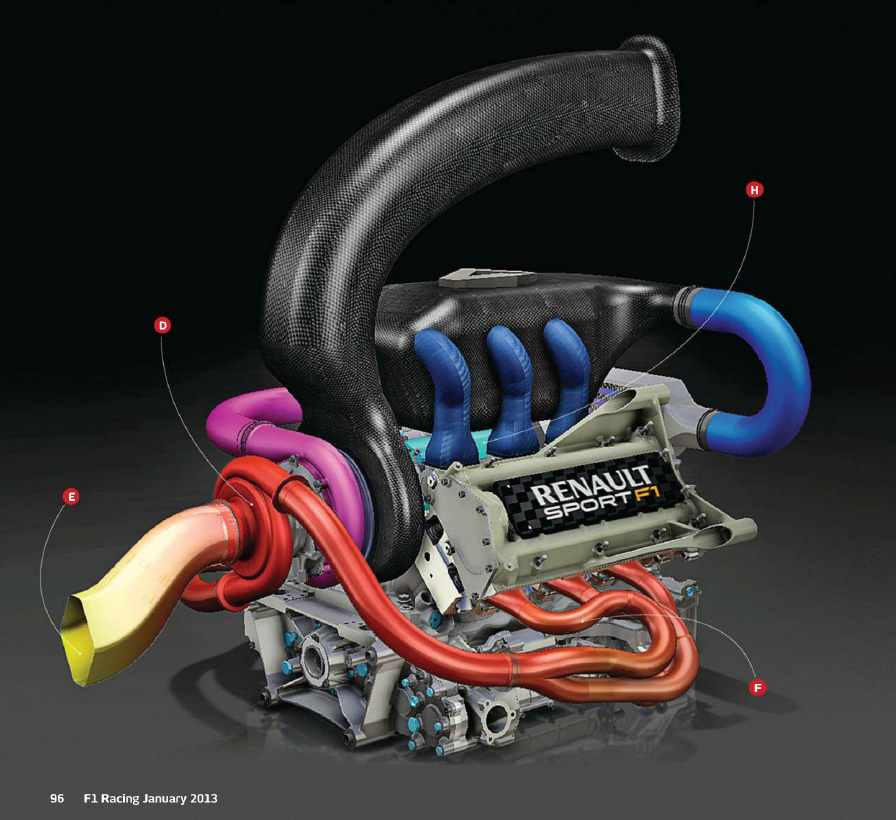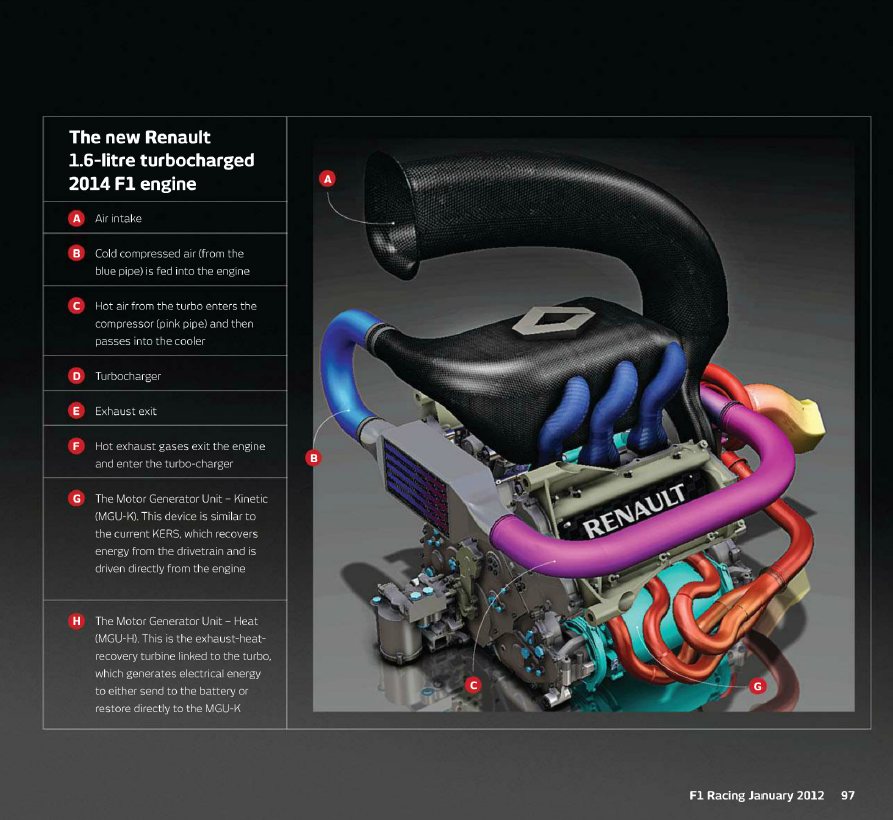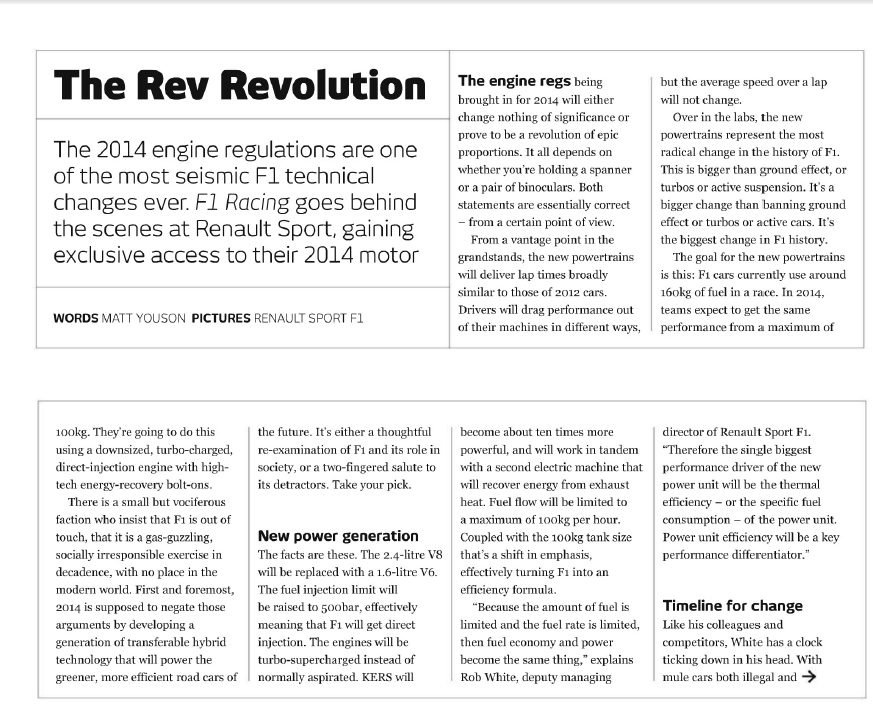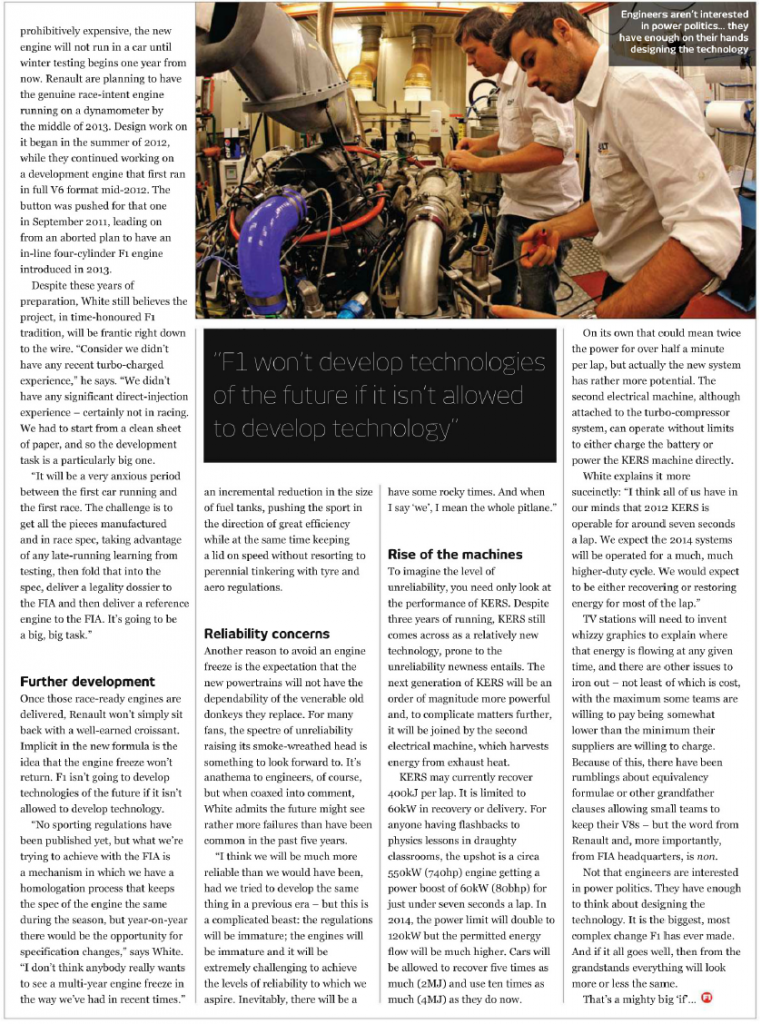langwadt wrote:FiA wrote:
5.5.5 At any given engine speed the driver torque demand map must be monotonically increasing for an increase in accelerator pedal position.
5.5.6 At any given accelerator pedal position and above 4,000rpm, the driver torque demand map must not have a gradient of less than – (minus) 0.030Nm / rpm.
I'm not sure I see how the "constant power" torque maps described here:
http://www.f1technical.net/features/17820
would fit with in those rules if 0-100% pedal must map to 0-100% torque at any given rpm
rule 5.5.5 etc prevents the (now banned) 'push to pass' effect being generated by mapping
the above link shows that ......
rule 5.5.6 continues the legitimisation of wheelspin control by a method that escapes definition as traction control
(wheelspin automatically and immediately causes the engine torque to reduce even without the driver lifting his foot)
and continues to allow the MGUK to be artificially driven by the ICE on the over-run, producing fake waste energy to harvest
the 2014 rules greatly increase the scope for this fakery
rule 5.5.6 relates to what happens automatically when the rpm changes regardless of accelerator position
it does not conflict with the other rules, those relate to what happens when the accelerator is moved, regardless of rpm
these functionalities are active simultaneously
ie 5.5.6 means that the torque will with varying rpm will be favourably modified relative to the driver-demanded torque
5.5.6 was necessary to accomodate the inherent characteristics of practical electric drive (that I highlighted)








